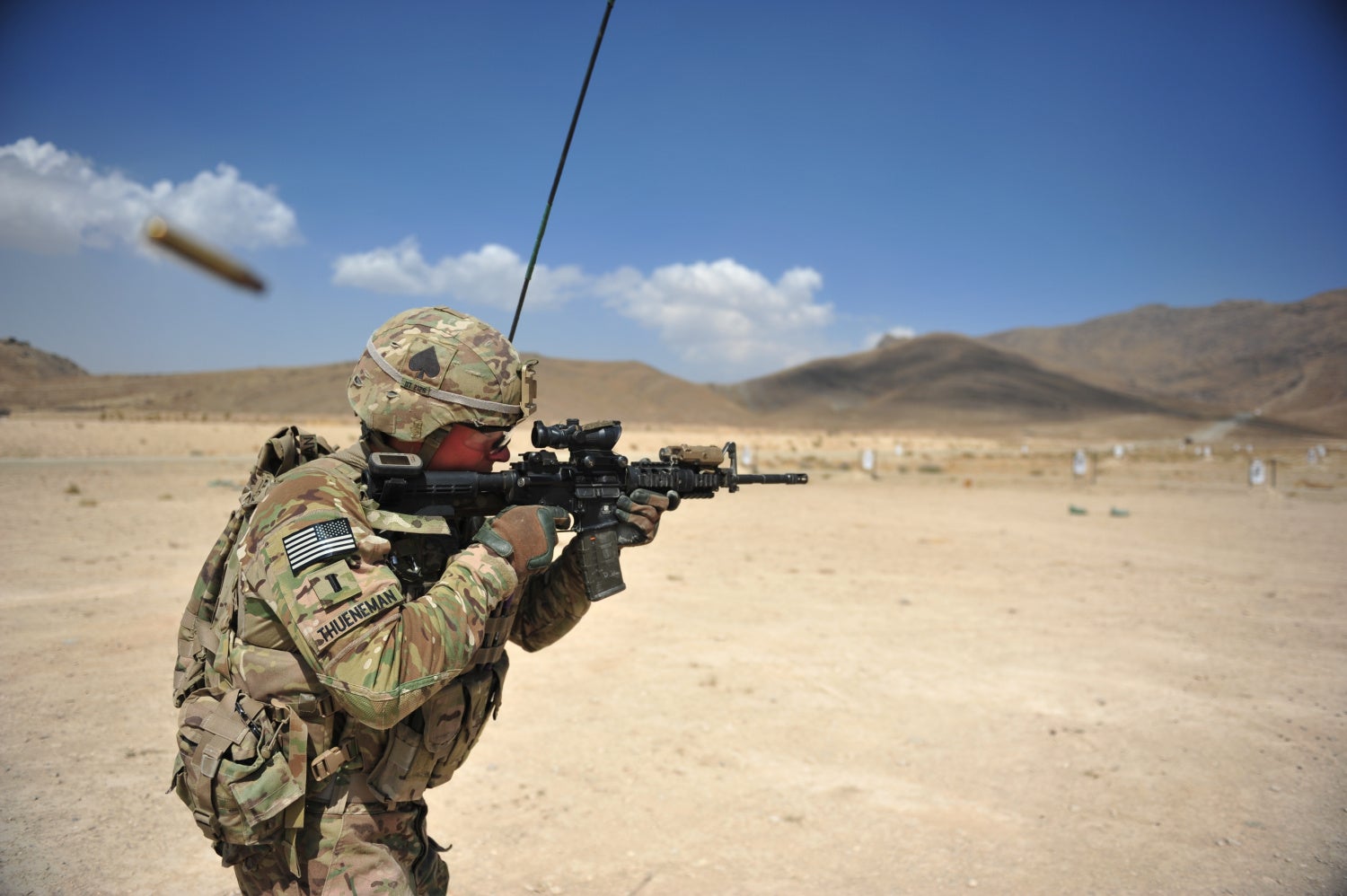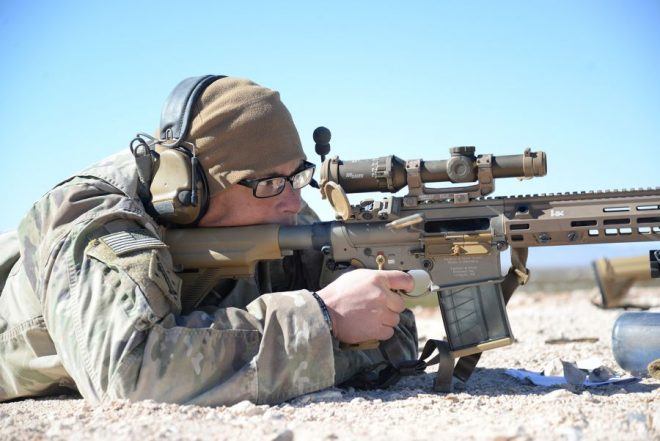SIG Sauer Electro-Optics have been awarded a major contract to provide the US Army’s new Direct View Optic (DVO) which will be used on the current M4A1 carbine, replacing the venerable ACOG . An award notice was posted on Sam.Gov at the end of last month with the value of the contract listed as $77,168,400.
The DVO program is seeking an optic that can replace the M150 Rifle Combat Optic, the Trijicon TA31RCO which entered service in 2007 through the Advanced Combat Optical Gunsight (ACOG) program. The M150 has an effective range out to 500 meters but the US Army is seeking a DVO capable out to 600 meters. In May 2019, predating the DVO solicitation, the USMC also launched a search for a new rifle optic to replace their ACOGs, in service as the AN/PVQ-31.
The US Army’s Contracting Command, based at Picatinny, New Jersey, issued a Prototype Project Opportunity Notice (PPON) in July 2019. The requirement called for:
The DVO will be capable of variable power magnification with minimum magnification of 1.0x with no rounding and maximum magnification greater than or equal to 6.0 power. Rationale: Variable power magnification optics combine the capabilities of the non-magnified optic’s ability to engage close quarter targets with a fixed-magnification optic’s ability to detect, recognize, identify, and precisely engage targets at extended ranges. This allows the Soldier to have both critical capabilities without the limitations of either non magnified or fixed magnification optics.
The Army’s criteria for the optic become a little clearer in other documents issued with the PPON. Along with the usual operational environment capability requirements for heat, vibration, environment, durability, etc. The Army required the DVO to have a passive reticle with “an Army specified reticle pattern with free-floating windage and range adjustment marks/numbers.” As well as ” an illuminated center aiming feature visible under all lighting conditions including total darkness.”
The successful DVO entrant had to be Picatinny rail compatible, ” mount an objective lens Laser Filter Unit that attaches to the objective lens end of the optic” and have an optical sight box center line of 38.1 ±2.5mm [1.5 ±0.1 inches] from the top of the rail. The optic had to be no longer than 10.5 inches and use AA, CR123 or CR2032 batteries if necessary.

1st Lt. Dan J. Thueneman, a platoon leader with Headquarters and Headquarters Company, 4th Brigade Combat Team, 101st Airborne Division (Air Assault), engages targets with his M4A1 rifle on Forward Operating Base Thunder, Paktia province, Afghanistan, Sept. 27, 2013. (US Army/Maj. Kamil Sztalkoper)
Neither the US Army or SIG Sauer have yet released further details on which optic has been selected or how many have been ordered by from the contract value we know a substantial follow-on award has been made and the original solicitation stated that a maximum quantity of 120,000 DVOs will be ordered. The follow-on production contract will be for five years.
The DVO is the latest in a series of SIG Sauer optics selected by the US Army, most recently with the US Army selecting the TANGO6 1-6×24 for the Designated Marksman Rifle’s optic and US SOCOM selecting the TANGO6 as their Squad-Variable Powered Scope.
 Your Privacy Choices
Your Privacy Choices
